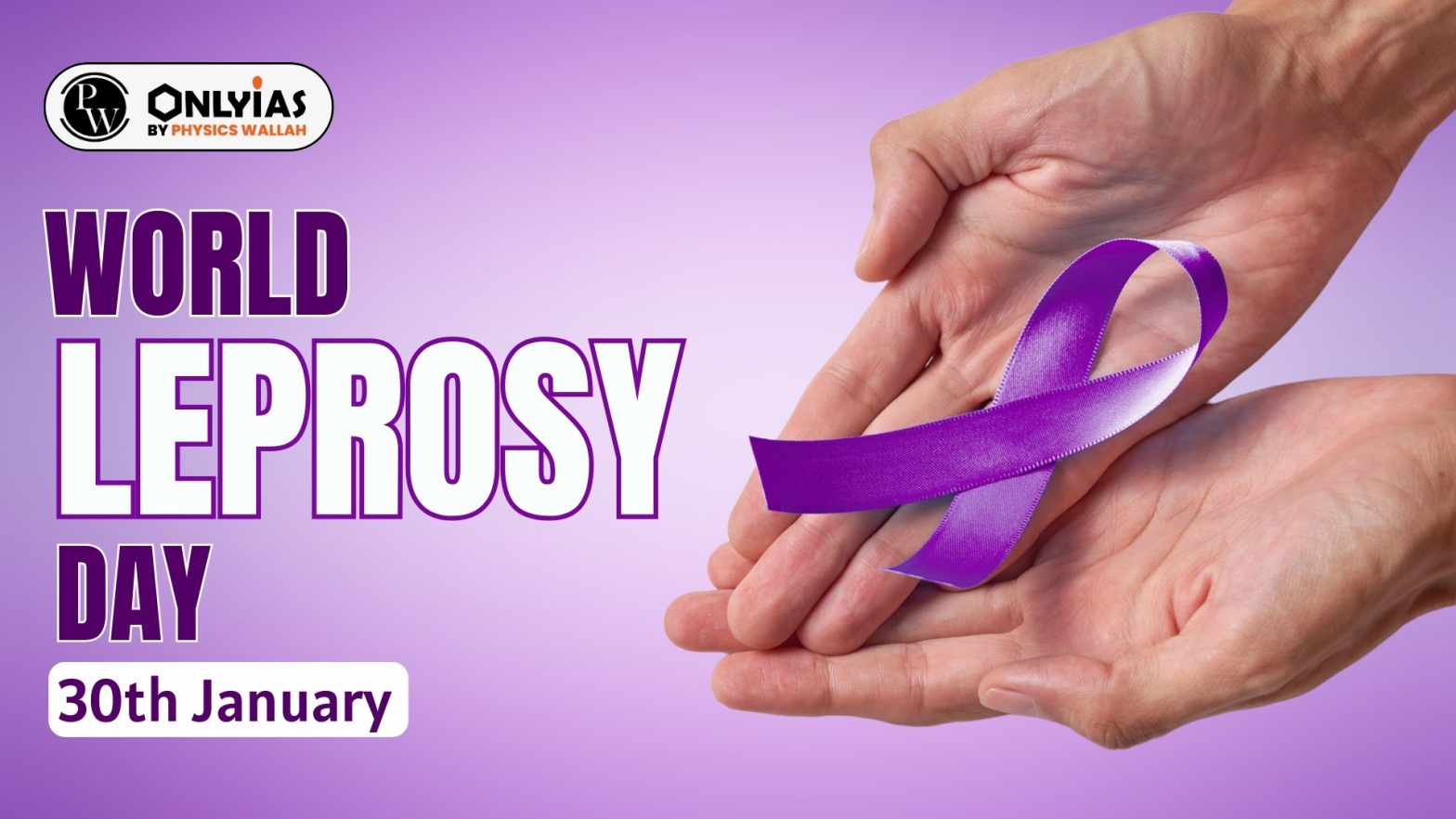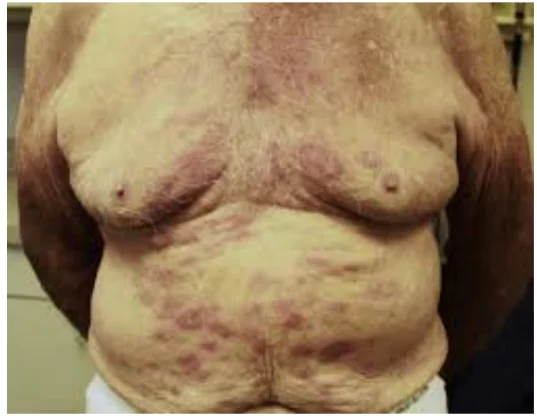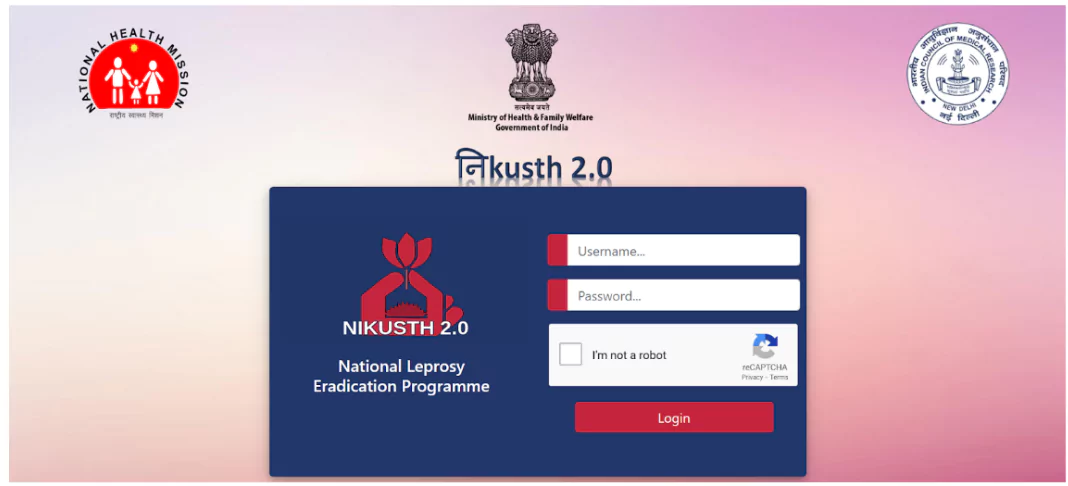World Leprosy Day 2025 highlights awareness, reduces stigma, and promotes efforts to eliminate leprosy globally. Join us in observing World Leprosy Day 2025.

World Leprosy Day 2025 will be observed on January 26th globally and January 30th in India, it is a key event aimed at combating the stigma surrounding leprosy, promoting understanding, and accelerating efforts to eliminate the disease. This year’s theme will likely emphasise the need to address the social and psychological challenges faced by individuals affected by this neglected tropical disease (NTD).
| World Leprosy Day 2025 Overview | |
| Aspect | Details |
| Name | World Leprosy Day 2025 |
| Global Date | Sunday, January 26, 2025 |
| India’s Observance Date | Thursday, January 30, 2025 (Mahatma Gandhi’s death anniversary) |
| Purpose | To raise awareness about leprosy, combat stigma, and advocate for the rights and dignity of individuals affected by the disease. |
| What is Leprosy? | A chronic infectious disease caused by Mycobacterium leprae, affecting skin, nerves, and mucosa. Curable with early treatment. |
| How is Leprosy Transmitted? | Prolonged close contact with untreated individuals through respiratory droplets. |
| Global Impact | Over 200,000 new cases annually in more than 120 countries. |
| Leprosy Cases in India | Prevalence rate reduced to 0.45 cases per 10,000 population (2021-22). |
| Major Initiative in India | National Leprosy Eradication Programme (NLEP). |
| Key Achievements |
|
| Goals for 2025 |
|
| India’s Vision | Achieve “Leprosy-Mukt Bharat” by 2027. |
| Alignment with SDGs |
|
Globally, World Leprosy Day is celebrated on the last Sunday of January, which falls on January 26th in 2025. In India, it is observed every year on January 30th to honour the memory of Mahatma Gandhi, who tirelessly championed the rights and dignity of those affected by leprosy.
World Leprosy Day was observed first in 1954 by French humanitarian Raoul Follereau to raise awareness about leprosy and promote empathy for individuals affected by the disease. Observed annually on the last Sunday of January, the day overlaps with Mahatma Gandhi’s death anniversary in India to honour his unwavering commitment to caring for individuals with leprosy.
The significance of World Leprosy Day lies in its mission to burst myths, reduce discrimination, and highlight global efforts to eliminate the disease. By encouraging education and inclusion, this day seeks to empower affected individuals and advocate for a leprosy-free world.
Leprosy is a chronic infectious disease caused by the bacterium Mycobacterium leprae. It primarily affects the skin, peripheral nerves, mucosa of the upper respiratory tract, and the eyes. If left untreated, leprosy can lead to severe disabilities and deformities. Despite being curable with multidrug therapy (MDT), the stigma associated with leprosy persists, hindering efforts to diagnose and treat it early.

Leprosy is caused by the slow-growing Mycobacterium leprae. The disease spreads through prolonged close contact with an untreated individual via respiratory droplets, such as those from coughing or sneezing. Contrary to common misconceptions, leprosy is not highly contagious and cannot be spread through casual contact, such as shaking hands, hugging, or sharing utensils.
Leprosy is both diagnosable and completely treatable with timely medical intervention. Here’s an overview of its diagnosis and treatment methods:
Leprosy is treated with Multidrug Therapy (MDT), a combination of antibiotics provided free of cost by the World Health Organization (WHO):
MDT effectively cures the disease, prevents its spread, and reduces the risk of complications when initiated early. Adherence to treatment and regular follow-ups are essential for complete recovery and to prevent reinfection or relapse.
India accounts for more than half of the global leprosy burden, which makes India a focal point in the fight against the disease. According to recent statistics, India reported a prevalence rate of 0.45 cases per 10,000 population in 2021-22, a significant reduction from 0.69 in 2014-15. Despite these advances, challenges persist in reaching underserved populations and overcoming deeply rooted stigma.
India’s efforts to combat leprosy date back decades, with the National Leprosy Eradication Programme (NLEP) functioning as the cornerstone of these initiatives. The NLEP focuses on early detection, free MDT distribution, rehabilitation for those with disabilities, and public awareness campaigns to reduce stigma.
In 2023, the Nikusth 2.0 Portal was launched to streamline leprosy case management, ensuring real-time data collection and analysis at national, state, and district levels. The National Strategic Plan & Roadmap for Leprosy (2023-27) aims to achieve a “Leprosy-Mukt Bharat” by 2027, three years ahead of the Sustainable Development Goals (SDGs) target.

Leprosy remains a public health challenge in over 120 countries, with more than 200,000 new cases reported every year. World Leprosy Day 2025 is a call to action for governments, healthcare organizations, and civil society to unite in eradicating the disease and addressing its social repercussions.
Despite advancements in medical science and treatment, eradicating leprosy presents several challenges:
Addressing these challenges requires a multi-pronged approach involving education, infrastructure development, and community support.
India has made significant improvements in combating leprosy through concentrated government initiatives. These include:
India’s achievements include reducing the prevalence rate from 0.69 cases per 10,000 population in 2014-15 to 0.45 in 2021-22, showcasing steady progress toward a leprosy-free nation.
World Leprosy Day 2025 is not just about raising awareness; it is a call to action. By uniting governments, NGOs, healthcare professionals, and communities, this day aims to promote a world where no one suffers from the stigma or consequences of untreated leprosy. Key actions to take on this day include:
As we observe World Leprosy Day 2025, the goal is clear: to create a future free from leprosy and the discrimination it brings. Achieving this vision requires collective action, sustained commitment, and a focus on equity in healthcare access.
By spreading awareness, supporting programmes like the National Leprosy Eradication Programme, and addressing societal stigma, we can move closer to a world where leprosy is not just eliminated but forgotten as a public health concern.
Ready to boost your UPSC 2025 preparation? Join PW’s UPSC online courses today!
World Leprosy Day 2025 is an annual event raising awareness about leprosy, promoting early treatment, and combating the stigma associated with the disease.
It emphasizes leprosy eradication efforts, advocates for mental well-being, and aims to eliminate the stigma surrounding the disease globally.
The theme has not been officially announced yet but it is likely to focuses on tackling stigma and ensuring compassionate care.
Yes, leprosy is completely curable with Multidrug Therapy (MDT), which is provided free by the World Health Organization (WHO).
You can raise awareness, support NGOs, advocate for inclusivity, and educate others on early diagnosis and treatment.
Early diagnosis prevents complications, reduces the risk of disabilities, and ensures timely treatment for full recovery.
<div class="new-fform">
</div>